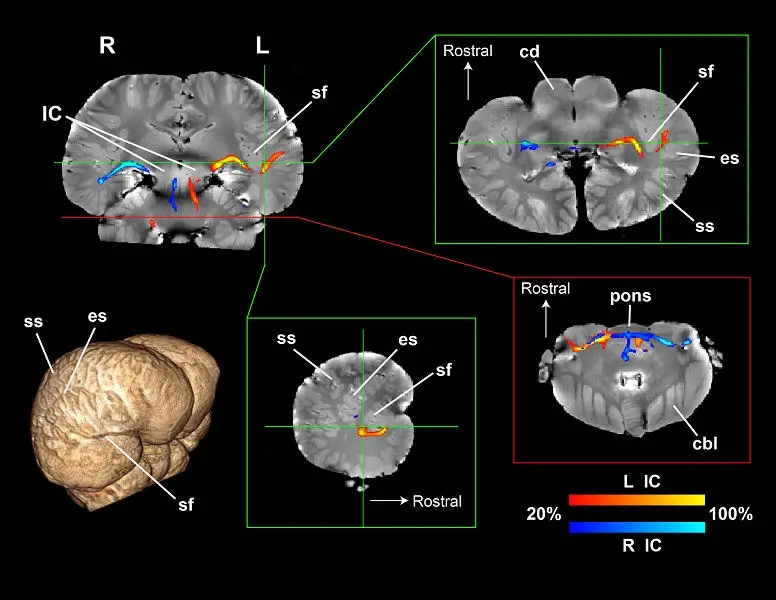Science & Tech
New Research Reveals Something Amazing about Dolphin Brains

It’s a well-known fact that dolphins are one of the most intelligent species on our planet. Previous research has shown that these marine mammals have a human-like intelligence and are even capable of comprehending symbols and abstract concepts.
It also has been long known that dolphins, as well as some other animals, use echolocation (or so-called biological sonar) for the orientation in space – they emit sounds of high frequencies, such as click and whistles, to navigate and locate the objects. Dolphins are also believed to have a ‘language’ of their own and to use sound to communicate their physical and emotional state.
A new study at Emory University reveals something interesting about dolphin brains and their unique auditory processing ability.
“Dolphins are incredibly intelligent, social animals and yet very little is known about how their brains function, so they have remained relatively mysterious,” said neuroscientist Gregory Berns, lead author of the study. “We now have the first picture of the entire dolphin brain and all of the white matter connections inside of it.”
The research team studied the scans of dolphin brains performed with the help of a technique called diffusion tension imaging (DTI). This technique makes it possible to map the brain’s wiring and thus to study in details the way sensory information is processed.

Image: Gregory Berns, Emory University
In fact, most mammals process sound in the temporal lobe, but dolphins seem to have at least two brain regions associated with the auditory system. The brain scans revealed that the dolphin auditory nerve is connected to both the temporal lobe and the area responsible for vision. Could it actually mean that these marine animals don’t have two separate senses of hearing and vision but have one hybrid sense instead? The researchers believe that this wiring structure is what hides behind their ability to echolocate and is directly connected to the fact that dolphins use sound for multiple purposes.
“Dolphins are the most sophisticated users of biological sonar in the animal kingdom,” said study co-author Lori Marino. “They can rapidly move back and forth between their senses of sight and sound.”
According to the researchers, this particularity makes dolphin brains more similar to those of bats rather than those of their close relatives, such as whales. This is extremely surprising because dolphins and bats are far apart in the evolutionary sense. It is still uncertain how two such different species could have possibly developed such a similar auditory processing mechanism.
This new finding is another confirmation to the incredible nature and complexity of dolphin brains. Further research could shed more light on the way these amazing animals perceive the environment and communicate with each other.
“This research shows that the dolphin brain is even more complex than we realized,” concluded Marino.
Image Credits: Dolphin Dream by Carol Cavalaris
Typos, corrections and/or news tips? Email us at Contact@TheMindUnleashed.com
